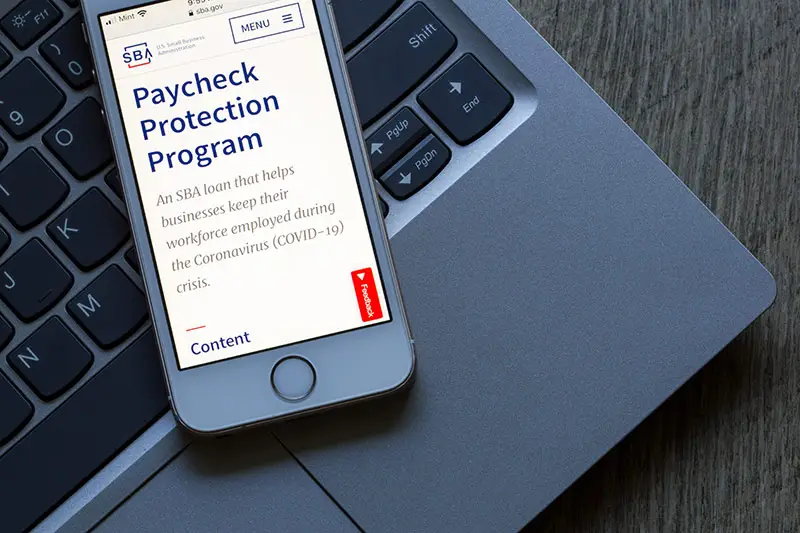In the ever-evolving landscape of government assistance programs, two standout initiatives have been providing a lifeline to businesses grappling with economic uncertainties: the Paycheck Protection Program (PPP) and the Employee Retention Credit (ERC). While these programs share the goal of supporting businesses during turbulent times, understanding how they intersect and impact each other is essential for maximizing financial benefits. In this guide, we’ll explore the relationship between PPP and ERC, demystifying the intricacies of calculating ERC credit when PPP is in play.
An Introduction to the Paycheck Protection Program & Employee Retention Credit
The Paycheck Protection Program (PPP) emerged as a cornerstone of the government’s response to the economic challenges posed by the pandemic. Designed to aid businesses in retaining their employees and covering essential operational costs, PPP provides forgivable loans to eligible businesses.
Concurrently, the Employee Retention Credit (ERC) was designed to encourage businesses to retain employees by offering a tax credit based on qualified wages paid during specific quarters of economic uncertainty.
Can You Apply for ERC if You Received PPP?
With the Consolidated Appropriations Act of 2021, businesses were met with a pivotal change in the rules governing PPP and ERC. This change allowed businesses that received PPP loans to also claim the ERC, provided they met the eligibility criteria for both programs. This shift expanded the financial support available to businesses, acknowledging the dynamic challenges they faced.
However, a significant limitation emerged: double-dipping. In essence, businesses cannot utilize the same wages to calculate both PPP forgiveness and ERC credit. This restriction is intended to prevent businesses from receiving duplicative benefits for the same period of wages.
How to Calculate ERC Credit With PPP
Calculating the ERC credit when PPP is involved requires a systematic approach. Let’s break down the process into actionable steps:
Step 1: Eligible Wages
Identify the wages eligible for inclusion in your ERC calculation. This includes wages paid to employees during qualifying quarters, taking into account any exclusions or limitations.
Step 2: Qualified Wages
Distinguish between qualified wages and non-qualified wages. Qualified wages are those eligible for ERC credit, while non-qualified wages, including wages used for PPP forgiveness, are excluded.
Step 3: PPP Forgiveness Impact
Determine the impact of PPP forgiveness on your ERC calculation. Since wages used for PPP forgiveness cannot be used for ERC, this step involves adjusting qualified wages accordingly.
Step 4: Adjustments and Limitations
Make any necessary adjustments and apply any limitations to your ERC calculation. Consider nuances such as the wage cap for qualified wages and any applicable thresholds.
Factors to Consider in Calculations
When calculating ERC credit with PPP, several factors come into play:
- Covered Period: The covered period for PPP forgiveness impacts which wages are available for ERC calculation. The PPP covered period might not align precisely with the quarters eligible for ERC, leading to strategic considerations.
- Types of Wages: Different types of wages, such as healthcare costs, can impact both PPP and ERC calculations. Understanding which wages are eligible for each program is crucial.
- Unforgiven PPP Loans: In cases where PPP loans were not fully forgiven, businesses need to factor in the portion of wages used for PPP repayment when calculating ERC.
Considerations for Businesses
Navigating the intricacies of PPP and ERC requires a strategic approach. Here are some considerations to optimize your use of both programs:
- Strategic Timing: Evaluate the timing of ERC credit and PPP forgiveness. Balancing the utilization of both benefits can lead to enhanced financial outcomes.
- Financial Impact: Analyze how ERC and PPP intersect based on your business’s unique financial situation. In some cases, it might be advantageous to prioritize one program over the other.
Filing for ERC if You Missed it
If you were eligible for the employee retention credit but didn’t claim it on your quarterly returns, you can choose to retroactively file with the IRS. If you meet the criteria, the IRS will issue a refund to you by check.
To claim the employee retention credit retrospectively, you need to file an amended quarterly return using IRS Form 941-X. Remember, you must submit one Form 941-X for each quarter you are claiming the ERC. After completing and mailing the form to the IRS, expect to receive a refund check within approximately 12 months.
If you prefer not to handle this task yourself, you have the option to partner with a tax professional. ERC Benefits can help streamline this process for you – read on to find out how our team can help.
ERC Benefits Can Facilitate ERC Refunds After You’ve Received PPP
While the interplay between PPP and ERC can seem complex, seeking guidance can simplify the process. ERC Benefits specializes in facilitating ERC refunds even after businesses have received PPP assistance. Our experts navigate the intricate calculations, ensuring that you maximize your financial benefits without any compliance concerns.
As you chart a course through the challenging economic landscape, remember that PPP and ERC are not mutually exclusive. By strategically leveraging both programs, you can optimize your financial resources and secure the support your business needs to thrive.
Share:


